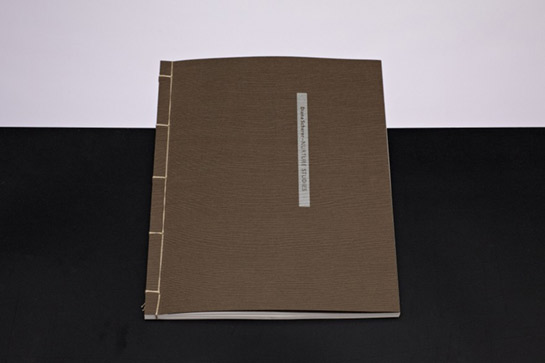Review: Nurture Studies by Diana Scherer

Now that Academic Photography (“New Formalism”) - photography obsessed with its own navel, investigating its own process - has become so popular, seemingly, at least for some critics, pointing the way towards the medium’s future, we could have a nice re-iteration of the debate about beauty and photography. I have a hunch: This type of photography is here to stay, given it’s so appealing to academics. But for the rest of us it might soon evoke the same reactions we have when seeing, for example, wallpaper from the 1970s: Kind of cool, yet also very clearly dated and passe. There we’re right in the messiness of talking about beauty today, in this still early 21st Century, because we’ve seen it all, and we’re all so ironic. In a nutshell, we’re more concerned about saying the right, proper things than addressing the issue(s).
Meaning we can’t really talk about beauty as in “the quality present in a thing or person that gives intense pleasure or deep satisfaction to the mind, whether arising from sensory manifestations (as shape, color, sound, etc.), a meaningful design or pattern, or something else (as a personality in which high spiritual qualities are manifest)” (this courtesy of dictionary.com). My personal problem is, however, that I do that all the time.
In an MFA crit, for example, I’ll say “this is beautiful.” Inevitably someone will ask “why?” - and I’ll say “just look at it!” For me, that’s a perfectly convincing argument, in particular since it’s a setting where the participants are usually fairly close with regards to their artistic education and background: Everybody has acquired the same tastes1, while, of course, their own personal preferences might differ. In other words, I should be able to concede that something is beautiful even if I don’t like it (and vice versa, even though that runs the risk of bringing us back into “ironic” territory. Then again, there also is the risk of ending in Academic Photography territory where a self-absorbed sincerity has replaced irony, with the rest of the mechanism still in place.).
It’s fairly simple to see what Diana Scherer’s Nurture Studies has to do with all of this. The book contains photographs of flowers or plants, the containers in which they were planted in removed. The containers’ shapes are left - we see the soil plus the roots, as if frozen in place, despite the fact that the restrictions that put them that way are gone. Still lifes of flowers/plants - let’s talk about beauty, shall we? Or maybe let’s at least acknowledge that beauty, in a very, very old-fashioned way, still occupies a place in art, in photography. These photographs of flowers against a simply, monochromatic background are beautiful. The book itself, as an object, is beautiful: Produced with a Japanese stab binding, it’s a very modest, simple affair. Each photo page is preceded by another one of translucent paper that only has a date printed on it.
I will say this: As hard as it is to write about beauty, being in its presence is so gratifying - provided you give yourself permission to just do that.
Nurture Studies; photographs by Diana Scherer; 128 pages; van Zoetendaal; 2012
1 I don’t want to overparse my own writing, but the plural is intentional here. As an MFA student you typically understand what is to be appreciated in, let’s say, the photography done by William Eggleston, even if you personally don’t like that work at all; and the same is true concerning many other photographic practitioners.